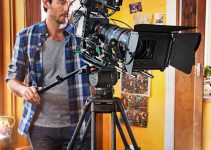Maintaining color consistency from the principal photography phase all the way through the post-production process of any filmmaking project could be an overwhelming task, especially when a multi-cam shooting is involved along the line. Things might get even worse when you need to match grades while working with an inferior codec where colors are already baked in, and it’s virtually impossible to match those shots in post.
To put things into perspective and shed some light on the process, Ted and Stephen from Aputure break down what color calibration is and explain how you can do it correctly for filmmaking. By providing a few useful tips and tricks, both professionals reveal how to make sure that the colors you capture initially with your camera are virtually the same as the colors being projected in the end.
In a nutshell, there two common problems when it comes to color calibration. First, your footage shot on multiple cameras might not match, and second, once you finish color grading and export your final footage it might look entirely different when projected on other screens. So, how do you tackle these issues?
First and foremost, make sure to double check white balance, color-shift and picture profile on all cameras that you tend to shoot with. You can also use some tools to help you with color calibration, one of them being a color checker passport or color chart. As long as you include a frame of this useful tool in every setup you’re about to shoot, you’re good to go.
You can then utilize the extremely convenient Color Match tool in DaVinci Resolve 12.5 to tweak colors with a few simple clicks. The result may not be perfect for your final product, but it’ll be a much better starting point to work from as you continue further with your secondary color corrections. As a rule, don’t forget to point the Color Checker Passport towards your key light source, and move it around if necessary to avoid any glare.
The proper output is the second essential consideration regarding color calibration. If you want to get accurate results every time you’re color grading, you need to calibrate your monitor as accurately as possible in the first place. To do so, you can get a hardware colorimeter or spectrophotometer that can provide accurate measurements and yield excellent results once you complete the calibrating process.
But, if you can’t afford either of these tools, you can still go through the settings of your monitor and manually adjust colors by eye. You don’t even need to have the most expensive high-end 10-bit monitor to complete the job. As long as you make the one that you currently own as neutral and accurate as possible you’re safe to move on further with color grading.
[source: Aputure]
Disclaimer: As an Amazon Associate partner and participant in B&H and Adorama Affiliate programmes, we earn a small comission from each purchase made through the affiliate links listed above at no additional cost to you.





I generally tell clients to get the DSC or the Color Checker Video charts, which I think are better than the passport. And shoot the image full-frame — do not make it a postage stamp in the frame. Pull any gels on the set if there’s a color wash. One chart per setup is fine (maybe 4-5 a day for an average shoot). And note you can get the same results as Color Match just by using eyes, scopes, and calibrated monitors.
Why pull the gels that are gonna be actually used in the scene? That would only make sense if you’re trying to abstractly match 2 different cameras without the context of the actual scene lighting.
If you try to white-balance a shot that has no white in it, you’re going to wind up with very screwy color. Try it and see.
Ok. So suppose the entire scene will be lit with a some strong tobacco gels, for example. So I pull the gels, shoot the card, and then bring back the gels. All my footage is tobacco except for the chart shot. What would be the process and how will the chart shot benefit me?
If you balance the shot with no gels, then put the gels back, the end result will be what you see on the set. If you balance the shot with gels in it, THERE IS NO WHITE ON THE SET. There will only be the color of the gel. Since we don’t have a “gel” position on a waveform monitor or a vectorscope, but we do have one for white, we can make the picture work that way. Camera manufacturers will tell you the same thing.